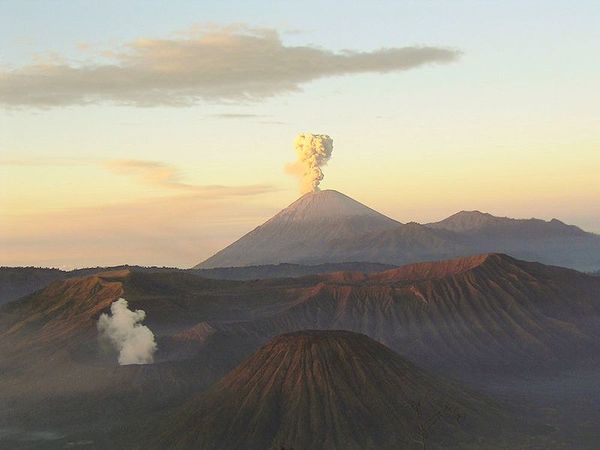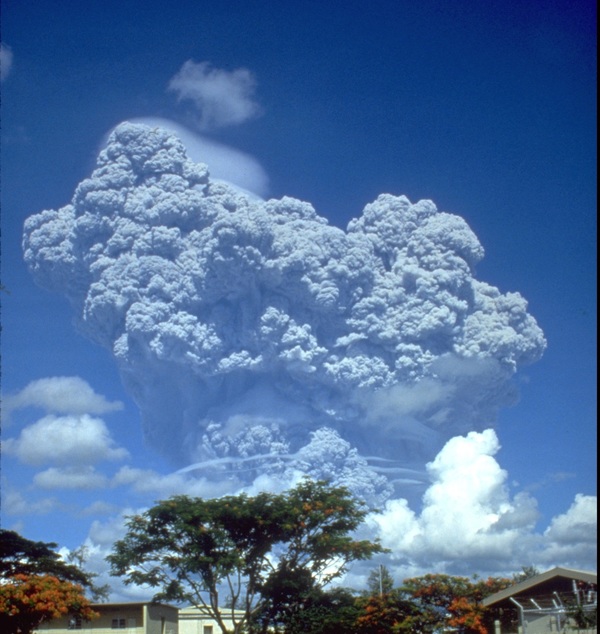| << Chapter < Page | Chapter >> Page > |

While volcanoes can warm the Earth by adding carbon dioxide to the atmosphere, which produces a greenhouse effect, they can also cool the Earth by injecting ash and sulfur into the atmosphere. These additions raise the albedo of the atmosphere, allowing less sunlight to reach the surface of the Earth. The effect lasts until the particles settle out of the atmosphere, typically within a few years. Volcanic eruptions have impacted human societies throughout history; the Mt. Tambora eruption in 1815 cooled the Earth so much that snow fell during June in New England, and the more recent Mt. Pinatubo eruption in 1991 (see Figure Mt. Pinatubo Explosion ) ejected so much sulfuric acid into the atmosphere that global temperatures were lowered by about 0.5 o C in the following year.

Evidence from the geologic past indicates that similar events have caused mass extinctions wherein a significant fraction of all species on Earth were wiped out in a relatively short amount of time. Sustained outgassing from continuous volcanic eruptions is thought to have produced so much ash and aerosols that light sufficient to support photosynthesis in plants was unable to penetrate the atmosphere, causing the food chain to collapse. The ash particles produced by extended eruptions would also have increased the Earth's albedo, making conditions inhospitably cool for plants and animals adapted to a warmer environment.
Asteroid impacts can also cause the climate to suddenly cool. When large asteroids strike the Earth, ash is ejected into the atmosphere, which increases albedo in the same way as volcanic eruptions. Everyday clouds (made up of water droplets) both cool and warm the Earth. They can cool the Earth by increasing the planet's albedo, reflecting sunlight into space before it reaches the surface. Clouds can also warm the Earth, by reflecting infrared radiation emitted by the surface back towards the planet. Different types of clouds, and different conditions, determine which effect predominates. On a hot summer's day, for example, clouds cool us by shielding us from the sun's rays, but on a winter's night a layer of cloud can act as a warming blanket.
The composition of the Earth's atmosphere is not fixed; greenhouse gases can be added to and removed from the atmosphere over time. For example, carbon dioxide is added by volcanoes and the decay or burning of organic matter. It is removed by photosynthesis in plants, when it is dissolved in the oceans and when carbonate sediments (a type of rock) are produced. Over geologic time, these processes have significantly reduced the proportion of carbon dioxide in the atmosphere. Atmospheric carbon dioxide levels just prior to the industrial revolution are thought to have been only one twentieth of those of 500 million years ago. Natural processes also remove carbon dioxide added by human activity, but only very slowly. It is estimated that it would take the Earth around a thousand years to naturally remove most of the carbon dioxide released by the industrial consumption of fossil fuels up to the present.

Notification Switch
Would you like to follow the 'Sustainability: a comprehensive foundation' conversation and receive update notifications?